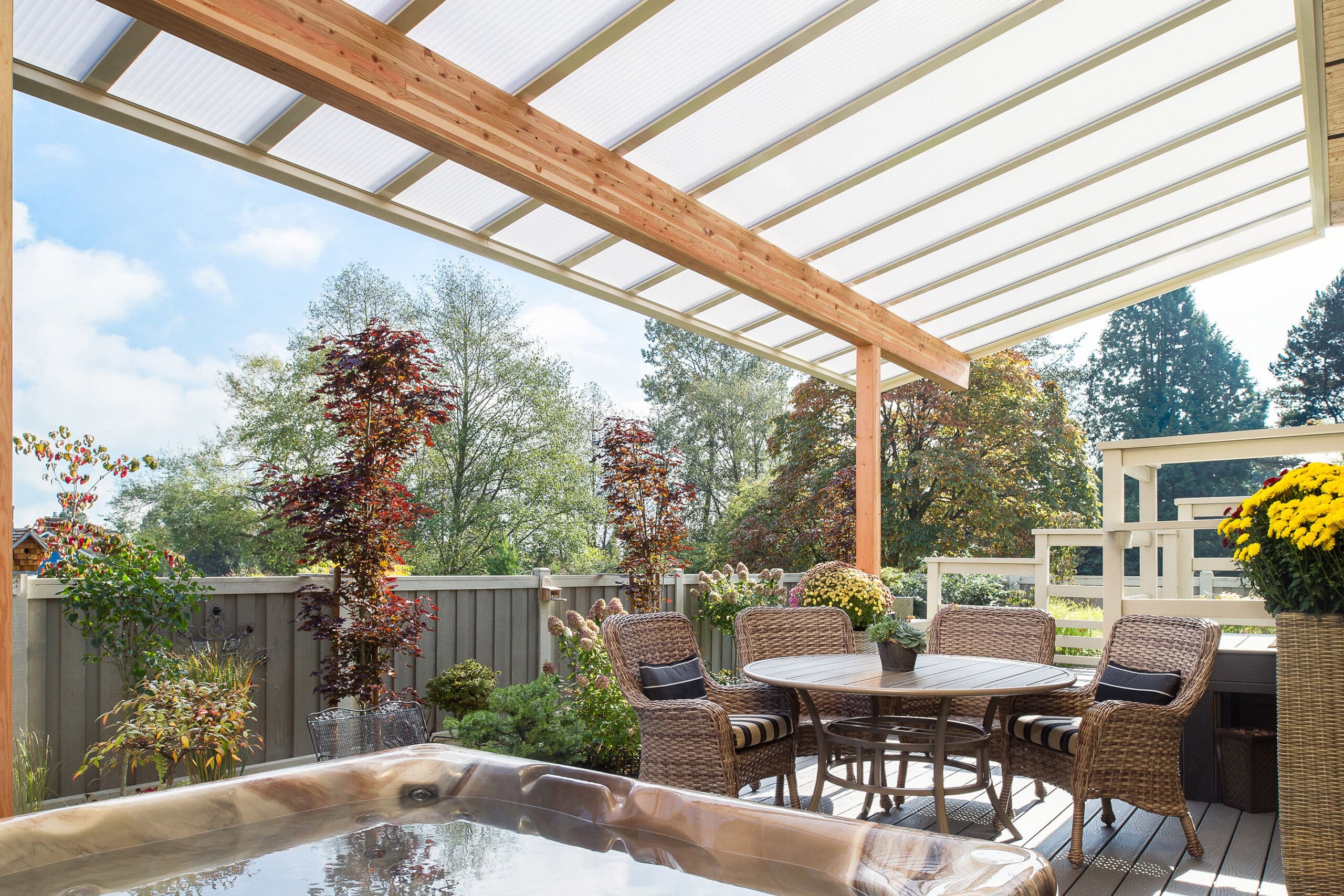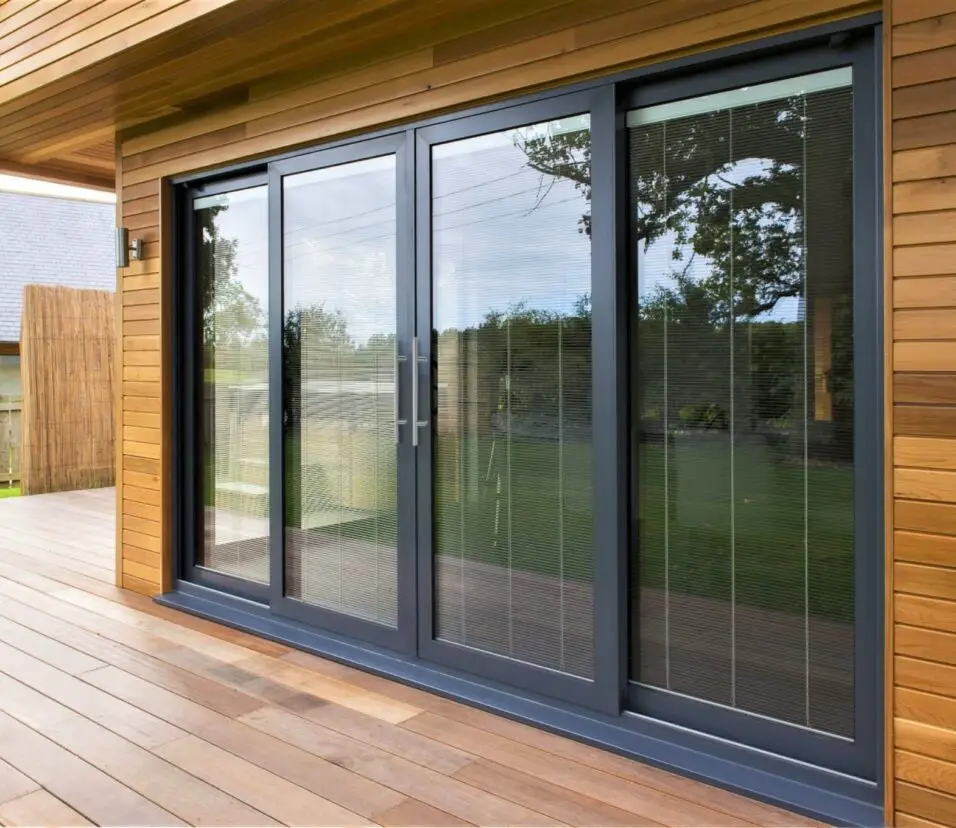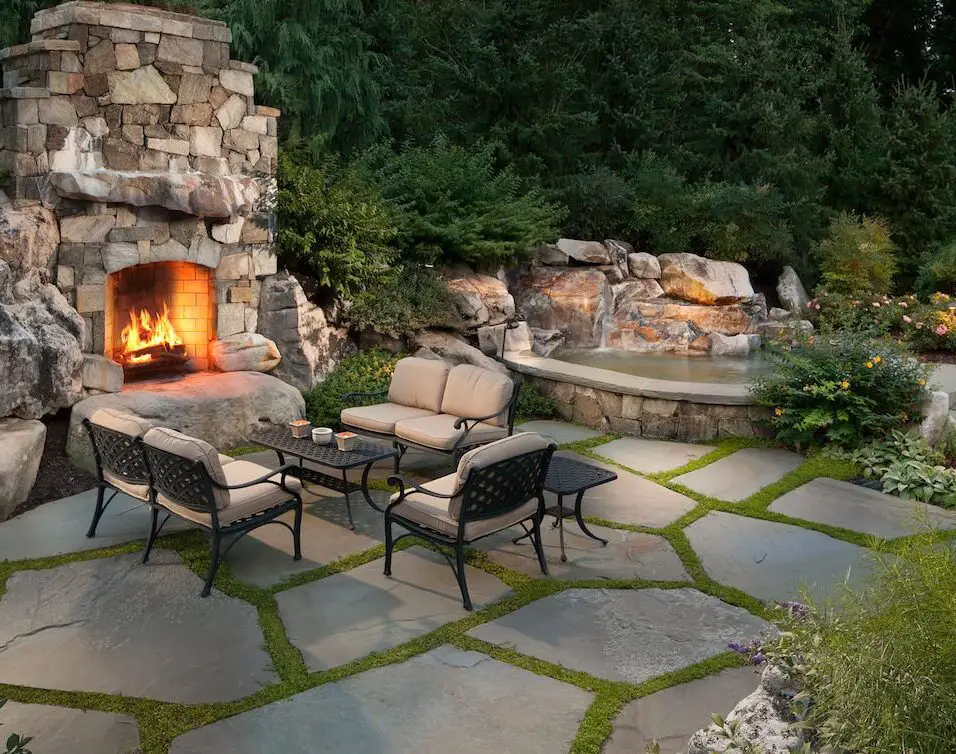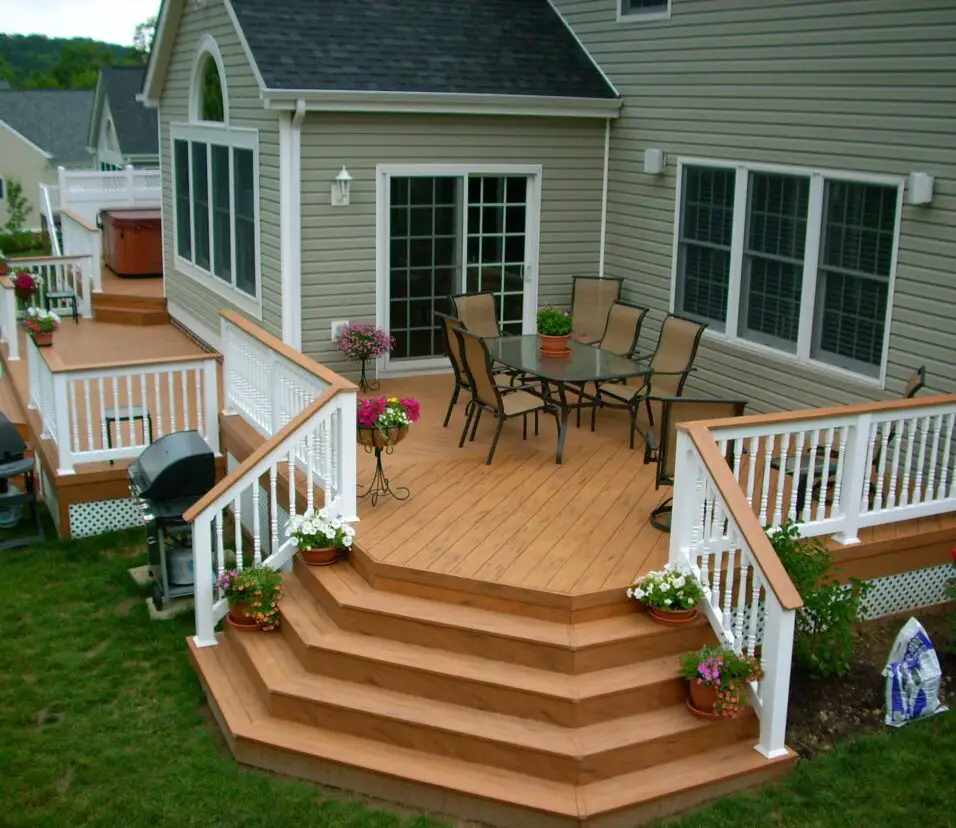How To Install Patio Cover
Introduction
How To Install Patio Cover: Installing a patio cover is a great way to create a shaded area where you can relax and entertain guests. Whether you want to protect your patio from the elements or simply add a stylish touch to your backyard, a patio cover can be a valuable addition to your home. In this article, we will guide you through the process of installing a patio cover, providing you with all the information you need to get started.
Firstly, it is important to determine the type of patio cover that best suits your needs and preferences. There are various options available, including pergolas, awnings, and solid roof covers. Pergolas are open structures with a lattice roof, providing partial shade and a visually appealing design. Awnings, on the other hand, are retractable and can be adjusted to provide shade as needed. Solid roof covers, such as insulated panels or shingles, offer complete protection from the sun and rain.
Once you have decided on the type of patio pavers cover, you will need to gather the necessary materials and tools. This may include lumber, screws, brackets, roofing materials, and a drill. It is important to measure your patio accurately to ensure that you purchase the correct amount of materials. Additionally, you may need to obtain any necessary permits or approvals from your local building department before beginning the installation process.
Before starting the installation, it is crucial to prepare the area where the patio cover will be installed. This may involve clearing any debris or vegetation, leveling the ground, and ensuring that the area is free from any obstructions. It is also important to consider the location of any underground utilities, such as water or gas lines, to avoid any potential damage during the installation process.
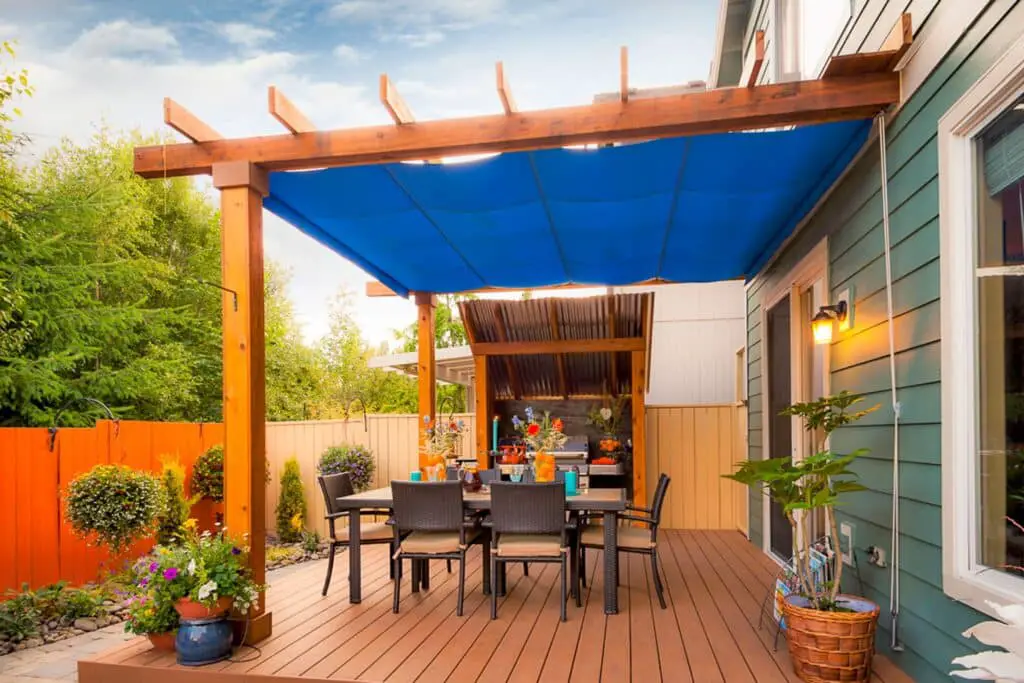
How do I cover my outdoor patio?
There are several options available to cover your outdoor patio, depending on your preferences and budget. Whether you want to create a shaded area to relax in or protect your patio from the elements, there are solutions that can meet your needs. In this article, we will explore some popular patio cover options and discuss their benefits and drawbacks.
One option for covering your outdoor patio is to install a pergola or a gazebo. These structures provide partial shade and can add a touch of elegance to your patio. Pergolas are typically made of wood and feature an open lattice roof, allowing some sunlight to filter through. Gazebos, on the other hand, have a solid roof and offer more protection from the sun and rain. Both options can be customized to fit your patio’s size and style, and they provide a great space for outdoor entertaining.
If you prefer a more flexible option, consider using a retractable awning. These can be attached to the side of your house or freestanding, and they can be extended or retracted as needed. Retractable awnings provide full shade when extended and can be easily adjusted to allow sunlight in when desired. They are available in a variety of colors and patterns, allowing you to choose one that complements your patio’s design. However, it’s important to note that retractable awnings may not be as durable as other options and may require regular maintenance.
Another popular choice for patio covers is a patio umbrella. These are a more affordable option and can be easily moved and adjusted to provide shade where needed. Patio umbrellas come in various sizes, shapes, and colors, allowing you to find one that suits your patio’s dimensions and style.
What is the cheapest way to cover a patio?
When it comes to covering a patio, there are several options available, each with its own advantages and disadvantages. However, if you are looking for the cheapest way to cover a patio, there are a few budget-friendly options to consider.
One of the cheapest ways to cover a patio is by using a tarp or canopy. Tarps are inexpensive and readily available at most hardware stores. They can be easily attached to the patio structure using bungee cords or ropes. Canopies, on the other hand, are slightly more expensive but offer a more durable and long-lasting solution. Both options provide shade and protection from the elements, making them ideal for temporary or seasonal use.
If you are looking for a more permanent solution, consider using shade sails. Shade sails are large pieces of fabric that are stretched tightly over the patio area to provide shade and protection. They are relatively inexpensive and can be easily installed using ropes or cables. Shade sails come in a variety of colors and sizes, allowing you to choose the one that best suits your patio’s aesthetic.
Another affordable option for covering a patio is using outdoor curtains or blinds. These can be hung from the patio structure and provide privacy and shade. Outdoor curtains are typically made from weather-resistant materials such as polyester or vinyl, while outdoor blinds are made from durable materials like bamboo or PVC. Both options are relatively inexpensive and can be easily installed using curtain rods or hooks.
How do you attach a patio roof to an existing roof?
Installing a patio roof on an existing roof adds shade and shelter to your outdoor living space. Installing a patio roof to your existing roof can be an easy and affordable way to create a nice outdoor dining area or a covered gathering room.
First, plan and design
Attaching a patio roof to an existing roof requires careful planning and design. Consider your patio’s size, shape, and roof style and pitch. You must choose the best attachment locations and make sure the patio roof won’t interfere with existing structures or utilities.
Second: Get Permits
Before starting work, check with your local building department for permits and permissions. The size and scope of your patio roof may require drawings and a building permit. Always verify with authorities to ensure you’re following local building codes.
Step 3: Install Support Beams
Once you have obtained any necessary permits, you can begin the construction process. The first step is to install support beams that will hold up the patio roof. These beams should be securely attached to the existing roof rafters or trusses. It is important to ensure that the beams are level and properly aligned to provide a sturdy and stable structure.
How do you cover a concrete patio?
There are several ways to cover a concrete patio, depending on your preferences and budget. Whether you want to enhance the appearance of your patio or make it more comfortable to use, there are options available to suit your needs. In this article, we will explore some popular methods for covering a concrete patio.
One option is to use outdoor rugs or mats. These can be a simple and affordable way to add color and texture to your patio. Outdoor rugs are designed to withstand the elements and can be easily cleaned with a hose or broom. They come in a variety of sizes, styles, and patterns, allowing you to choose one that complements your outdoor decor. Outdoor mats are another option, typically made of durable materials like rubber or plastic. They can provide a non-slip surface and help protect your patio from stains and damage.
Another option is to paint or stain the concrete. This can be a more involved process, but it can completely transform the look of your patio. Concrete paint or stain is specifically designed for outdoor use and can withstand the elements. It can be applied in a variety of colors and finishes, allowing you to customize the look of your patio. Before painting or staining, it is important to thoroughly clean and prepare the concrete surface to ensure proper adhesion and longevity of the finish.
If you prefer a more permanent solution, you can consider installing pavers or tiles. Pavers are individual pieces made of various materials, such as concrete, stone, or brick. They can be laid directly on top of the concrete patio, creating a new surface. Pavers come in a range of sizes, shapes, and colors, allowing you to create a unique design.
What material is used for covered patio?
A covered patio is a great addition to any outdoor space, providing shade and protection from the elements. When it comes to choosing the material for a covered patio, there are several options available, each with its own advantages and disadvantages.
One popular material for a covered patio is wood. Wood is a versatile and natural-looking material that can be stained or painted to match the style of your home. It is also relatively affordable and easy to work with, making it a popular choice for DIY projects. However, wood requires regular maintenance to keep it looking its best, including sealing and staining to protect it from moisture and UV damage.
Another option for a covered patio is aluminum. Aluminum is a lightweight and durable material that is resistant to rust and corrosion. It is also low-maintenance, requiring only occasional cleaning to keep it looking its best. Additionally, aluminum is available in a wide range of colors and finishes, allowing you to customize the look of your patio. However, aluminum can be more expensive than other materials, and it may not provide the same natural aesthetic as wood.
If you’re looking for a more modern and sleek option, you may consider a covered patio made from steel. Steel is a strong and durable material that can withstand harsh weather conditions. It is also fire-resistant and requires minimal maintenance. However, steel can be more expensive than other materials, and it may not be as easy to work with for DIY projects.
When installing a patio cover, there are several materials that you will need to have on hand. The specific materials required may vary depending on the type of patio cover you are installing.
but some common materials include:
1. Patio Cover Kit: This will typically include the main structure of the patio cover, such as the posts, beams, and rafters.
2. Roofing Material: This can be anything from shingles to metal panels, depending on your preference and the climate in your area.
3. Fasteners: You will need screws, nails, or other fasteners to secure the various components of the patio cover together.
4. Concrete or Anchors: These are used to secure the posts of the patio cover to the ground or existing structure.
5. Tools: You will need a variety of tools, such as a drill, saw, level, tape measure, and wrenches, to assemble and install the patio cover.
2. Are there any specific tools required for installing a patio cover?
Yes, there are several specific tools that are typically needed for installing a patio cover. These tools may vary depending on the type of patio cover you are installing, but some common tools include:
1. Measuring tape: This is essential for accurately measuring the dimensions of your patio and determining the size of the cover you will need.
2. Level: A level is necessary to ensure that your patio cover is installed straight and level, preventing any potential issues with water runoff or structural stability.
3. Screwdriver and/or drill: Depending on the type of fasteners used, you may need a screwdriver or drill to secure the patio cover to the supporting structure.
4. Saw: If you need to cut any materials to fit your patio cover, a saw will be necessary. This could include cutting the cover itself, as well as any supporting beams or posts.
5. Ladder: Depending on the height of your patio cover, a ladder may be needed to access the installation area safely.
It is important to consult the specific installation instructions provided by the manufacturer of your patio cover, as they may recommend additional tools or equipment that are specific to their product.
What are the steps involved in installing a patio cover?
Installing a patio cover involves several steps to ensure a successful and sturdy structure. The first step is to measure and mark the area where the patio cover will be installed. This will help determine the size and placement of the cover. Next, it is important to prepare the ground by clearing any debris and leveling the area. This will provide a solid foundation for the patio cover.
Once the ground is prepared, the next step is to assemble the frame of the patio cover. This typically involves connecting the posts, beams, and rafters according to the manufacturer’s instructions. It is important to ensure that all connections are secure and that the frame is level and square.
After the frame is assembled, the next step is to install the roofing material. This can be done using screws or nails, depending on the type of roofing material being used. It is important to follow the manufacturer’s instructions for proper installation and to ensure that the roofing material is securely attached to the frame.
Are there any safety precautions to consider during the installation process?
First and foremost, wear gloves, safety glasses, and a hard hat to avoid risks. You should also work with a partner or have someone nearby to help in an emergency.
Make sure the patio cover installation area is clean of impediments and debris that could cause tripping or falling. Work carefully with power tools and heavy equipment and follow manufacturer directions and safety guidelines.
Are there any specific regulations or permits required for installing a patio cover?
Yes, there are often specific regulations and permits required for installing a patio cover. The regulations and permit requirements can vary depending on your location and the type of patio cover you are installing. It is important to check with your local building department or zoning office to determine the specific regulations and permits that apply to your project.
In some areas, you may need to obtain a building permit before installing a patio cover. This typically involves submitting detailed plans and specifications for the patio cover to ensure it meets local building codes and regulations. The building department will review the plans and may require modifications or additional information before issuing the permit.
Additionally, there may be specific regulations regarding the size, height, and location of the patio cover. For example, there may be setback requirements that dictate how far the patio cover must be from property lines or other structures. It is important to familiarize yourself with these regulations to ensure compliance and avoid any potential fines or penalties.
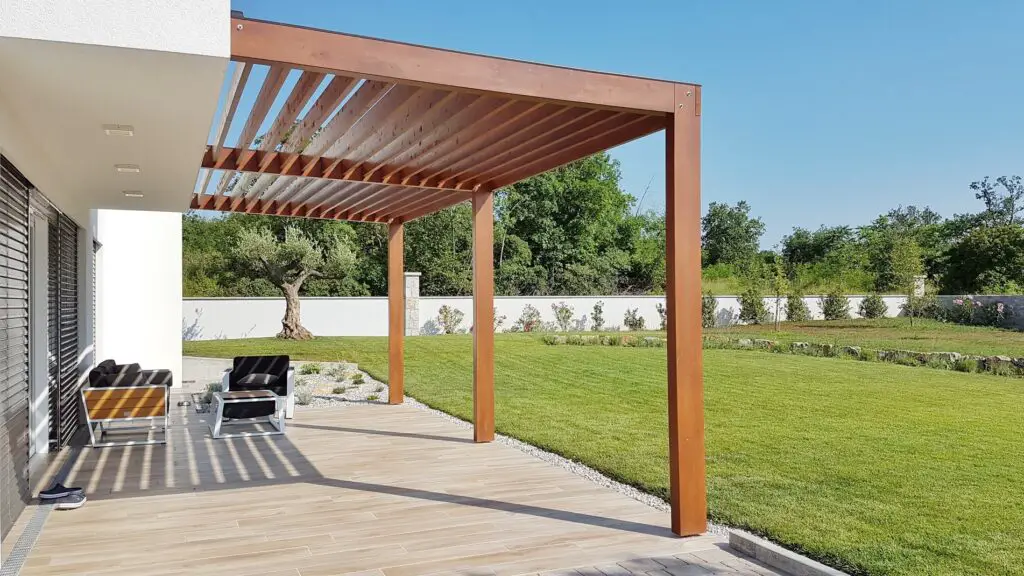
Conclusion
Installing a patio cover can be a great way to enhance your outdoor living space and provide protection from the elements. Whether you want to create a shaded area for relaxation or protect your patio furniture from rain and sun damage, a patio cover can be a valuable addition to your home. However, the installation process can be complex and requires careful planning and execution. In this guide, we will provide step-by-step instructions on how to install a patio cover.
The first step in installing a patio cover is to determine the size and location of the cover. Measure the area where you want to install the cover and decide on the type of cover you want, such as a pergola, awning, or solid roof. Consider factors such as the amount of shade you want, the direction of the sun, and any existing structures or obstacles that may affect the installation.
Next, gather all the necessary materials and tools for the installation. This may include lumber, screws, brackets, roofing materials, and a ladder. Make sure you have everything you need before starting the installation process to avoid delays or interruptions.
Once you have the materials and tools ready, start by preparing the area where the patio cover will be installed. Clear any debris or vegetation and level the ground if necessary. If you are attaching the cover to an existing structure, such as a house or a wall, make sure it is sturdy and can support the weight of the cover.



